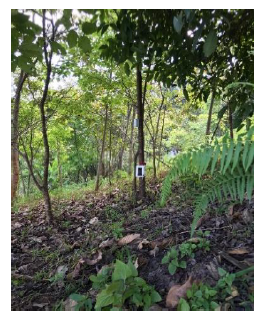The Diversity of Small Mammals in Natural and Recovery Forests inMae Rim District, Chiang Mai Province
Keywords:
Mammal diversity, Camera trapping, Forest restoration, Chiang MaiAbstract
Forest areas in Mae Rim District, Chiang Mai Province, have been converted to farmlands, causing the area to deteriorate and affecting wildlife habitats. Various organizations are working to restore the area. The effectiveness of the restoration program must then be monitored. The purpose of this study was to investigate and compare the diversity of small mammals and their frequency of detection (FD) in natural and restored forests in Mae Rim District, Chiang Mai Province. From February to August 2021, three camera traps were installed at each site to detect mammals that are active on the ground. There was in total 531 traps-night per forest. Nine mammal species from six families and two orders were discovered in the natural forest. The Large Indian Civet (Viverra zibetha) had the highest FD value of 4.14, followed by the Small Indian Civet (Viverricula indica) (FD = 2.82) and Leopard Cat (Prionailurus bengalensis) (FD = 1.13). There were five species from four families and one order recorded in the restored forest. The Leopard Cat (Prionailurus bengalensis) had the highest frequency of entering with an FD of 0.94, followed by the Small Indian Civet (Viverricula indica) with an FD of 0.56. Leopard Cats are carnivores, while civets are omnivores and potential seed dispersers. The similarity of mammal species found in both locations was 71%. The findings show that forest restoration provides habitats for local mammals, and the presence of seed dispersers implies the area's potential to undergo natural regeneration.

